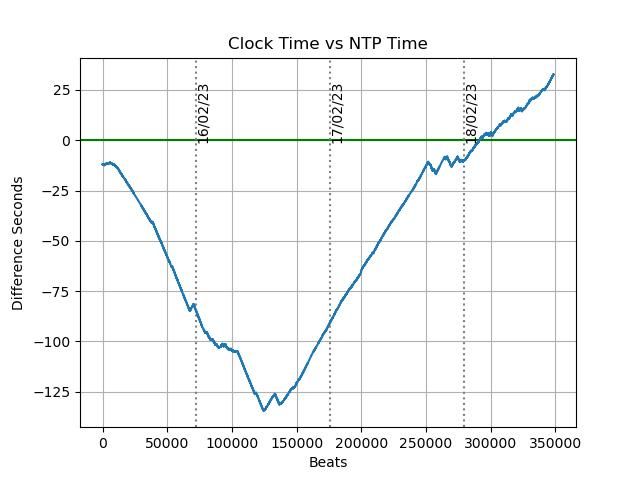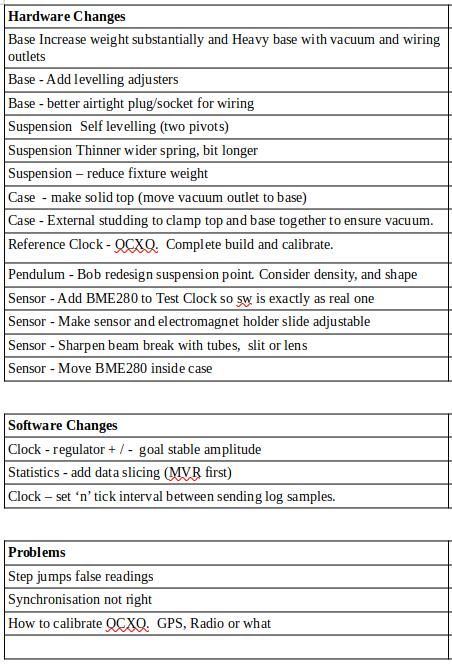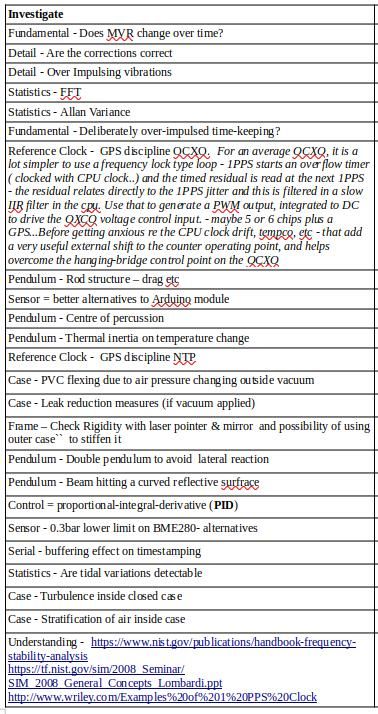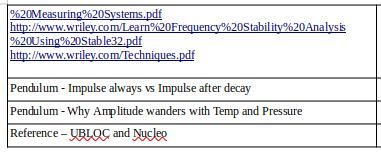Posted by Joseph Noci 1 on 18/02/2023 19:18:53:
You mentioned in your post in the precision pendulum thread WRT using the ublox pps output- you need 10MHz, etc….
10MHz comes with bad jitter – read my posts – you can only use 1,2,4,8,12,24Mhz. ALL other frequencies have moderate to very bad jitter. Change your reference timebase to suit, say , 12MHz, or change the pendulum to a 10/12 rate, ie, a 0.83333hz pendulum….after all , you are really only interested in stability detrmination, not 'actual' time ( are you?) – Call it the SOD-Second…
I think it was mentioned to feed the clock into a DDS chip and use that to generate the 10MHz – not really a good idea, – to get a low jitter 10MHz clock from the DDS the DDS input clock really needs to be 3 to 4x Nyquist, so 40MHz, which you can't get from the UBLOX. Some DDS chips have a PLL clock mulitiplier to generate 100MHz plus from low rate clocks ( 8MHz, etc), but the phase jitter from the PLL is high enough for it to reflect in the DDS output frequency as well, depending on the clock to output clock relationship.
The Si5351 is a better option for this – you can set the Ublox to 24MHZ, and feed that to the Si5351 clock input., and set it to generate 10MHz, which it does cleanly. But that is another dark road, and deviating from your path…
If using the UBLOX to provide a 10MHz clock as measurement reference timebase you will reach the noise floor very quickly in Allan Variance.
And here I am opening my mouth again…
Always glad to hear what you have to say Joe.
Yes, I knew the M8 jitters unless the output frequency divides into 48MHz because you told me!
The M8Q is more about providing options than a particular need for it to generate jitter free 10MHz. What I'm after is a stable frequency source as a way of calibrating other frequencies. For example, I have a 10MHz OCXO which will do, except I'd like to adjust it as close to 10MHz as I can get, hence interest in GPS. One reason for wanting a better 10MHz source is I the various equipments I have that are improved by plugging one in.
The other reasons are pendulum related. At the moment I'm using Arduino's which are with a max external clock input of 6.4MHz. Dividing the OCXO gets me 5MHz, but I hope I can get an equally stable 6MHz from the UBLOX, which provides more resolution.
If I switch from Arduino to a Nucleo, PET I'm hoping the M8Q will give better accuracy and resolution with 12, 16 or 24MHz as a timer input, or maybe by using the M8Q to clock the Nucleo instead of a crystal.
I'm hoping to understand Allan Variance one day!
Dave
duncan webster 1.








